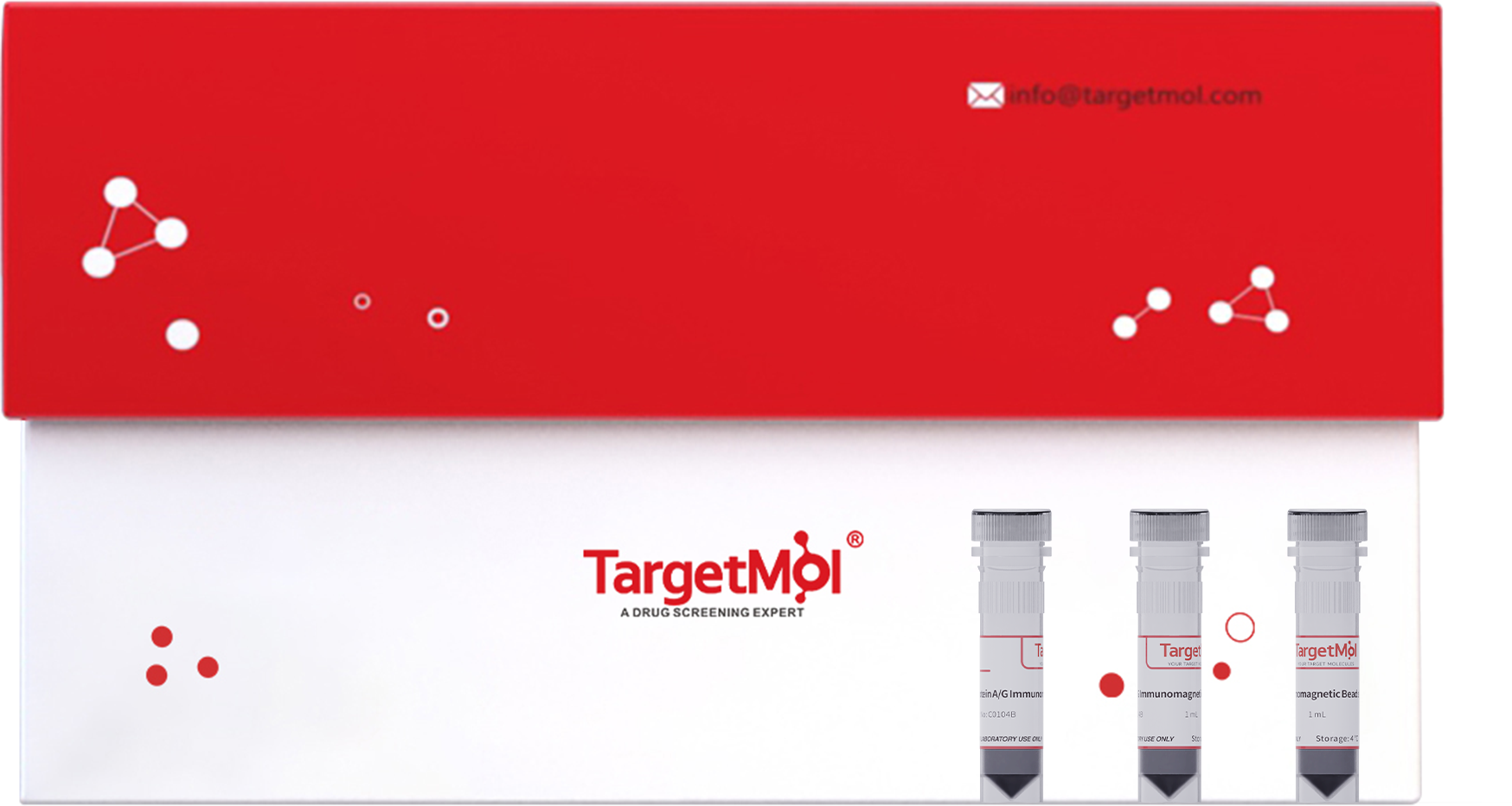 Your shopping cart is currently empty
Your shopping cart is currently empty


Magrose Beads Strep-Tactin
The Magrose Beads Strep-Tactin employs the Strep-Tactin/Strep-tag purification system, which mimics the streptavidin–biotin interaction but combines high specificity with gentle elution conditions. Compared to other affinity tags, Strep-tag II is a small peptide tag consisting of only 8 amino acids (Trp-Ser-His-Pro-Gln-Phe-Glu-Lys), minimizing potential interference with the structure or function of the target protein. As a result, removal of the tag is generally unnecessary. Strep-Tactin exhibits an affinity for Strep-tag II that is nearly 100 times higher than that of streptavidin. The purification process is conducted under mild, physiological conditions, helping preserve protein bioactivity and enabling the recovery of target proteins with purity levels exceeding 99%.
| Pack Size | Price | USA Warehouse | Global Warehouse | Quantity |
|---|---|---|---|---|
| 5 mL | $315 | - | In Stock | |
| 5 mL * 10 | $2,015 | - | In Stock |
 Features
Features
-
Mild purification conditions: with single-step purity superior to His-tag, does not affect the structure or function of the fusion protein.
-
High affinity: significantly stronger binding to Strep-tag II than streptavidin and more efficient matrix allows for faster purification of tagged proteins.
-
Reusable: retain excellent performance and high binding capacity after multiple uses.
 Product Application
Product Application
Suitable for the purification of Strep-Tag II–labeled proteins expressed in any system, including baculovirus, mammalian cells, yeast, and bacteria.
 Product Information
Product Information
| Magrose Beads Heparin | Specifications |
|---|---|
| Particle Size | 30-150 μm |
| Surface Ligand Density | ~6 mg Strep-Tactin/mL Beads |
| Protein Binding Capacity (1) | ~7 mg Strep-tag II protein/mL Beads |
| Suspension Concentrationb (2) | 10% (V/V) magnetic bead suspension |
| Storage Buffer | 1×PBS (0.1%Tween-20 and 0.1% Proclin 300) |
**Notes: ** 1.Protein binding capacity may vary depending on the target protein, the listed value is for reference only.
2.1 mL of bead suspension contains 100 μL of magnetic beads.
 Instructions
Instructions
Buffer Preparation
The following are commonly used buffer compositions suitable for most Strep-tag II protein purification applications.
Note: It is recommended to filter buffers through a 0.22 μm or 0.45 μm membrane for sterilization before use.
1)Binding Buffer: 10 mM Tris-HCl, 150 mM NaCl, 1 mM EDTA,contain 0.03% Proclin 300, pH 8.0.
2)Elution Buffer: 2.5 mM desthiobiotin in Binding Buffer.
3)Regeneration Buffer:0.5 M NaOH or 1 mM HABA in Binding Buffer.
Protein Sample Preparation
1)Intracellular proteins expressed in E. coli or yeast: Dilute the expression cells with an appropriate volume of Binding/Washing Buffer, add protease inhibitors (e.g., 1 mM PMSF or Protease Inhibitor Cocktail C0001), resuspend the cells, and lyse them by sonication on ice to obtain the crude protein sample. If the sample is too viscous, add an appropriate amount of nuclease and incubate on ice for 30 minutes to degrade nucleic acids. Centrifugation may also be performed as needed.
2)Intracellular proteins expressed in animal cells: Harvest an appropriate amount of animal cells and wash once with PBS. Remove the supernatant, then resuspend the cells in an appropriate volume of Binding/Washing Buffer containing 1% (V/V) Triton X-100 or 1% (V/V) NP-40. Add protease inhibitors and incubate on ice for 10 minutes to obtain the crude protein sample.
3)Extracellular proteins: Collect the culture supernatant containing the expressed protein and dilute it 1:1 with Binding/Washing Buffer to prepare the crude protein sample.
Magnetic Bead Pretreatment
The amount of magnetic beads required should be calculated based on the target protein yield and the binding capacity of the beads. For example, when expressing a target protein in E. coli, 250 mL of fermentation broth may yield approximately 1 g of wet bacterial cells. If a preliminary experiment estimates the target protein yield to be ~7 mg, then 10 mL of a 10% magnetic bead suspension is recommended for purification. The following procedure illustrates this example:
1)Vortex the Strep-tag II Magrose Beads Strep-Tactin thoroughly to ensure complete resuspension. Use a pipette to transfer 10 mL of the bead suspension into a 15 mL centrifuge tube. Place the tube in a magnetic separator and let it stand for 1 minute. After the beads have aggregated, remove the supernatant and take the tube out of the separator.
2)Add 5–10 mL of Binding/Washing Buffer to the tube, vortex or pipette to fully resuspend the beads. Perform magnetic separation again and discard the supernatant. Repeat this washing step twice.
Note: To minimize bead loss during magnetic separation, once the solution becomes clear, securely close the cap of the centrifuge tube and keep it in the magnetic separator. Then, holding both the separator and tube together, invert several times to allow the clear solution to rinse off any residual beads from the tube cap. Let the tube stand until the solution clears again before proceeding. This method should be used for all subsequent magnetic separation steps.
Binding of Magnetic Beads to Target Protein
1)Suspend 1 g of wet bacterial cells in 10 mL of Binding/Washing Buffer. After cell disruption and lysis, transfer the resulting crude protein sample into the centrifuge tube containing the pre-treated magnetic beads. Place the tube on a vortex mixer and mix for 15 seconds.
2)Place the tube on a rotator and mix at room temperature for 20–30 minutes. To prevent degradation of the target protein, the incubation can alternatively be performed at 2–8 °C for 1 hour.
3)Perform magnetic separation. Transfer the supernatant to a new centrifuge tube and keep it for follow-up analysis. Remove the tube from the magnetic separator and proceed to the washing step.
Washing of Magnetic Beads
1)Add 5–10 mL of Binding/Washing Buffer to the tube containing the beads. Rotate for 2 minutes to fully resuspend the beads, then perform magnetic separation. Transfer the wash solution to a new centrifuge tube for potential downstream analysis. Repeat this washing step once.
2)To avoid contamination of the target protein by nonspecifically adsorbed proteins on the inner wall of the original tube, add 5–10 mL of Binding/Washing Buffer to resuspend the beads again, then transfer the bead suspension to a new centrifuge tube. Perform magnetic separation and transfer the supernatant to the wash collection tube.
Elution of Target Protein
1)Determine the elution volume as needed to achieve the desired concentration of the target protein. Add 2–5 mL of Elution Buffer, mix at room temperature on a rotator for 2 minutes to fully resuspend the beads, and perform magnetic separation. Collect the eluate into a new centrifuge tube to obtain the purified target protein sample.
2)To ensure complete elution of the target protein, repeat Step 1 and collect the eluate into a separate centrifuge tube to confirm whether the elution is complete.
Bead Cleaning and Storage
1)NaOH Regeneration: After protein elution, clean the beads as follows. Wash the beads 3 times with 5–10 mL of purified water, then wash 3 times with 5–10 mL of 0.5 M NaOH solution. Afterward, wash with 5–10 mL of purified water until the pH is neutral. Finally, add 10 mL of Storage Buffer and store the beads at 2–8 °C.
2)HABA Regeneration: If desthiobiotin is used for eluting the target protein, the beads can be regenerated using HABA buffer. Wash the beads 5 times with 5–10 mL of 1 mM HABA solution, wash for 5 minutes each time. Then wash the beads with Binding Buffer until they return to their original color. Finally, add 10 mL of Storage Buffer and store at 2–8 °C.
Optimization of the Protein Purification Process
The protocol described above is suitable for purifying most Strep-tag II fusion proteins. However, depending on the binding characteristics between the target protein and the Strep-tag II Magrose Beads Strep-Tactin, users may optimize the purification process to improve yield and purity.
A.Suggestions for improving target protein recovery:
1)Extend the incubation time of the protein solution and magnetic beads.
2)Add appropriate protease inhibitors to prevent degradation of the target protein.
3)Increase the amount of magnetic beads used.
4)Extend the elution time or perform additional elution steps.
B.Suggestions for improving target protein purity: 1)Add appropriate protease inhibitors to prevent degradation of the target protein.
2)Extend the washing time or increase the number of washing steps.
 Storage
Storage
Store at 4℃ for 2 years
 Precautions
Precautions
1.Avoid freezing, drying, or high-speed centrifugation of the magnetic beads.
2.To minimize bead loss, magnetic separation time should be no less than 1 minute per cycle.
3.Before removing beads from the tube, ensure they are evenly suspended by gentle shaking. Handle gently to prevent the bubbles.
4.It is recommended to use high-quality pipette tips and centrifuge tubes to avoid loss of beads due to adhesion.
5.If the solution is too viscous during mixing, making it difficult to resuspend the magnetic beads by inverting the tube, use pipetting or brief vortexing to fully resuspend the beads.
6.Users may retain the supernatant removed during magnetic separation and perform sample analysis as needed. This can help monitor the purification process and optimize the protein purification workflow.
7.This product is reusable. When reusing magnetic beads, it is recommended to purify the same type of protein. If purifying a different protein, fresh magnetic beads should be used.
8.The product is for R&D use only, not for diagnostic procedures, food, drug, household or other uses.
9.Please wear a lab coat and disposable gloves.
 Instruction Manual
Instruction Manual
| Size | Quantity | Unit Price | Amount | Operation |
|---|

Copyright © 2015-2025 TargetMol Chemicals Inc. All Rights Reserved.



